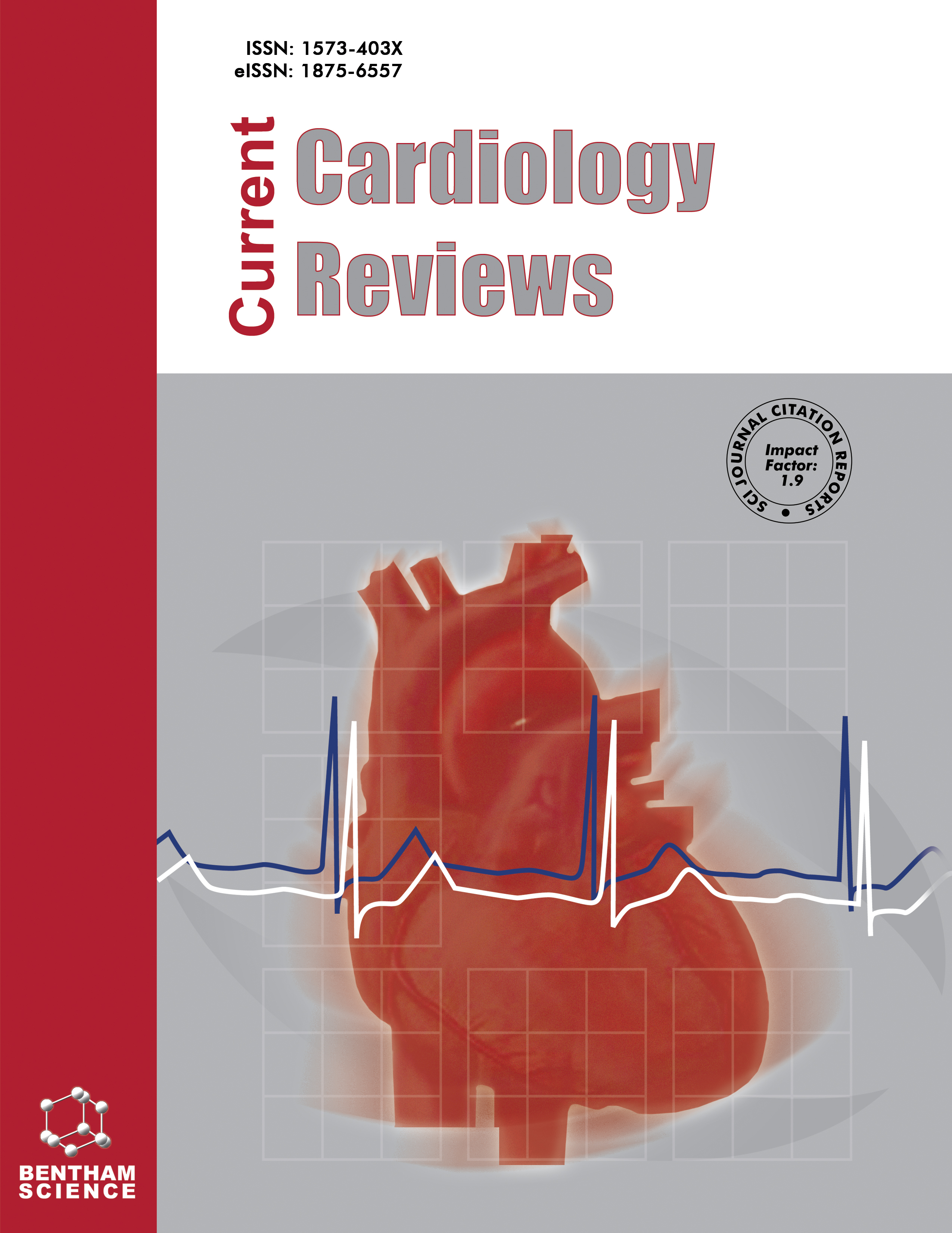- Home
- A-Z Publications
- Current Cardiology Reviews
- Previous Issues
- Volume 16, Issue 1, 2020
Current Cardiology Reviews - Volume 16, Issue 1, 2020
Volume 16, Issue 1, 2020
-
-
Phospholipase A2 is an Inflammatory Predictor in Cardiovascular Diseases: Is there any Spacious Room to Prove the Causation?
More LessAuthors: Anwar Santoso, Teuku Heriansyah and Mohammad S. RohmanLipoprotein-associated phospholipase A2 (Lp-PLA2) is an enzyme family of phospholipase A2 produced by the inflammatory cell in atherosclerotic plaque. It is transported in the circulation, attached mainly to low-density lipoprotein-cholesterol (LDL-C). It hydrolyzes glycerophospholipids particularly fatty acids at the sn-2 position and produces numerous bioactive lipids; and leads to endothelial dysfunction, atherosclerotic Read More
-
-
-
Regulation of Myocardial Extracellular Matrix Dynamic Changes in Myocardial Infarction and Postinfarct Remodeling
More LessAuthors: Alexey Ushakov, Vera Ivanchenko and Alina GagarinaThe article represents literature review dedicated to molecular and cellular mechanisms underlying clinical manifestations and outcomes of acute myocardial infarction. Extracellular matrix adaptive changes are described in detail as one of the most important factors contributing to healing of damaged myocardium and post-infarction cardiac remodeling. Extracellular matrix is reviewed as dynamic constantly remodeling struct Read More
-
-
-
Neprilysin: A Potential Therapeutic Target of Arterial Hypertension?
More LessArterial hypertension is the most prevalent chronic disease in the adult population of developed countries and it constitutes a significant risk factor in the development of cardiovascular disease, contributing to the emergence of many comorbidities, among which heart failure excels, a clinical syndrome that nowadays represents a major health problem with uncountable hospitalizations and the indolent course of which progres Read More
-
-
-
Pragmatic Analysis of Dyslipidemia Involvement in Coronary Artery Disease: A Narrative Review
More LessBackground: Dyslipidemia is the main factor involved in the occurrence and progression of coronary artery disease. Objective: The research strategy is aimed at analyzing new data on the pathophysiology of dyslipidemia involvement in coronary artery disease, the modalities of atherogenic risk estimation and therapeutic advances. Methods: Scientific articles published in PubMed from January 2017 to February 2 Read More
-
-
-
Syndrome of Supine Hypertension with Orthostatic Hypotension: Pathophysiology and Clinical Approach
More LessAuthors: Aamir Ahmed, Mohammed Ruzieh, Shaffi Kanjwal and Khalil KanjwalThis article is intended to provide guidance and clinical considerations for physicians managing patients suffering from supine hypertension with orthostatic hypotension, referred to as “SH-OH”. We review the normal physiologic response to orthostasis, focusing on the appropriate changes to autonomic output in this state. Autonomic failure is discussed with a generalized overview of the disease and examination of specific syn Read More
-
-
-
Contemporary Pharmacologic Management of Heart Failure with Reduced Ejection Fraction: A Review
More LessAuthors: Obiora Egbuche, Bishoy Hanna, Ifeoma Onuorah, Emmanuela Uko, Yasir Taha, Jalal K. Ghali and Anekwe OnwuanyiHeart failure with reduced ejection fraction (HFrEF) is defined as the presence of typical symptoms of heart failure (HF) and a left ventricular ejection fraction ≤ 40%. HFrEF patients constitute approximately 50% of all patients with clinical HF. Despite breakthrough discoveries and advances in the pharmacologic management of HF, HFrEF patients continue to pose a significant economic burden due to a progressive disease c Read More
-
-
-
Gender Differences in Hemodynamic Regulation and Cardiovascular Adaptations to Dynamic Exercise
More LessAuthors: Pier P. Bassareo and Antonio CrisafulliExercise is a major challenge for cardiovascular apparatus since it recruits chronotropic, inotropic, pre-load, and afterload reserves. Regular physical training induces several physiological adaptations leading to an increase in both cardiac volume and mass. It appears that several genderrelated physiological and morphological differences exist in the cardiovascular adjustments and adaptations to dynamic exercise Read More
-
-
-
Large Unrepaired Aortopulmonary Window Presenting in Adulthood
More LessAuthors: Munish Dev, Madhurima Sharma and Naresh RanaBackground: Aortopulmonary window is an uncommon congenital heart disease, with untreated cases not surviving beyond childhood. However, very rarely it can present in adult patients with features of pulmonary hypertension. Clinically these patients cannot be differentiated from other more common conditions with left to right shunt. Transthoracic echocardiography if performed meticulously, can depict the defect in ao Read More
-
-
-
Valve in Valve Trans-Catheter Aortic Valve Replacement Followed by LVAD Deactivation in the Setting of Recovered Systolic Function
More LessAuthors: Abdel R. Al Emam, David Barton, John Um and Gregory PavlidesBackground: Advanced heart failure has extremely high mortality without advanced therapies (left ventricular assist device (LVAD) implantation or cardiac transplant). LVAD patients with bioprosthetic aortic valve are more prone to leaflet fusion resulting in valvular stenosis and regurgitation. Case Presentation: We present a 46-year-old patient who had LV systolic function recovery while on LVAD. However, he had a severely st Read More
-
Volumes & issues
-
Volume 21 (2025)
-
Volume 20 (2024)
-
Volume 19 (2023)
-
Volume 18 (2022)
-
Volume 17 (2021)
-
Volume 16 (2020)
-
Volume 15 (2019)
-
Volume 14 (2018)
-
Volume 13 (2017)
-
Volume 12 (2016)
-
Volume 11 (2015)
-
Volume 10 (2014)
-
Volume 9 (2013)
-
Volume 8 (2012)
-
Volume 7 (2011)
-
Volume 6 (2010)
-
Volume 5 (2009)
-
Volume 4 (2008)
-
Volume 3 (2007)
-
Volume 2 (2006)
-
Volume 1 (2005)
Most Read This Month
Article
content/journals/ccr
Journal
10
5
false
en


